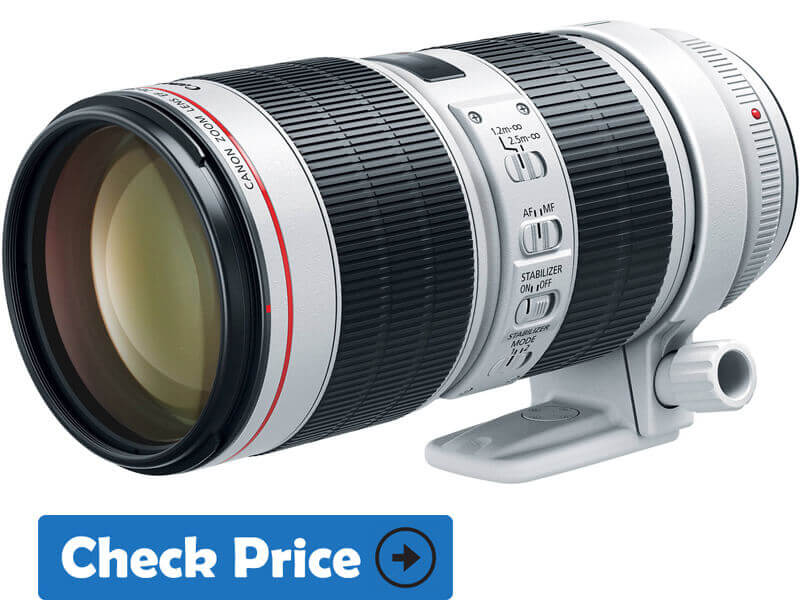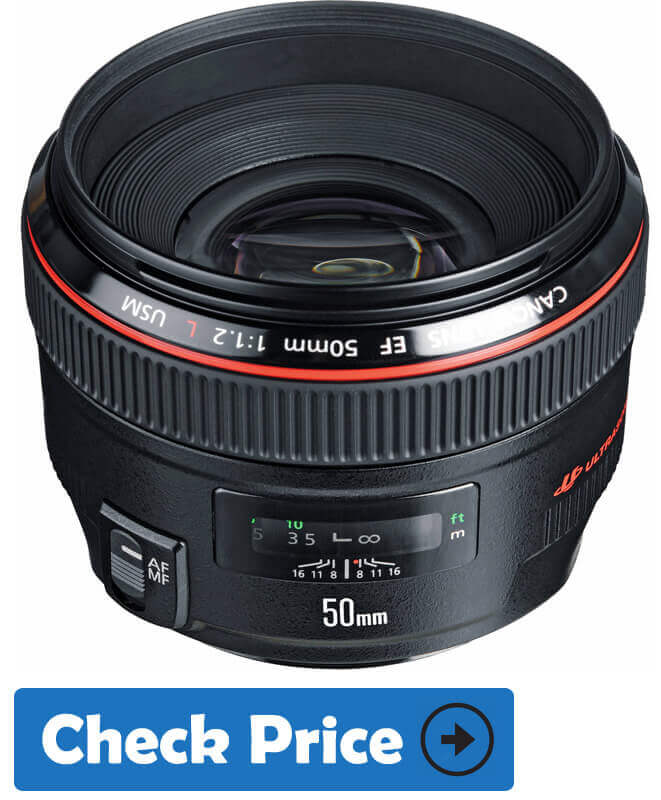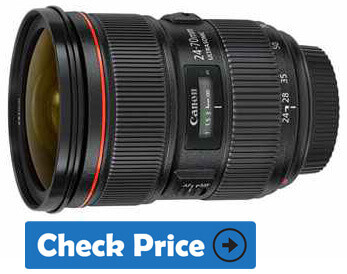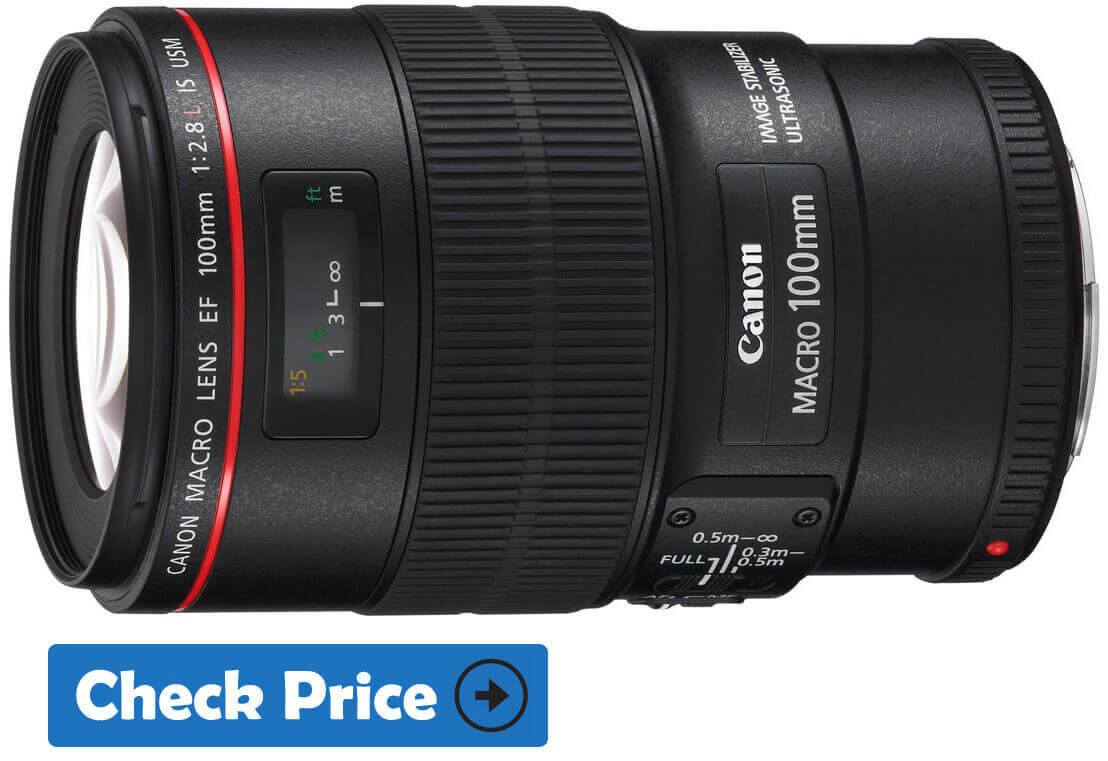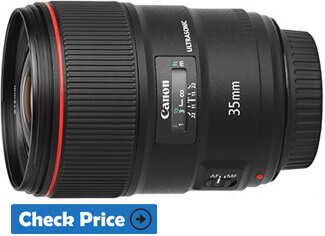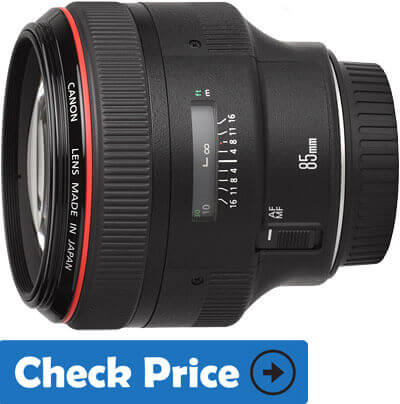Portraying someone is stealing a bit of the soul, telling their secrets through their eyes, their story through their scars and their fears through their wrinkles. A portrait is not just a photo, it is much more, it is the image of a person with a soul, with feelings, with so much to tell!
And no matter what camera you use, you are the person who has to know how to transmit all this. And the goal … does it count?
It is important?
In my opinion, and I think that when you finish reading the article you will agree with me, yes it is. It is not that it is essential to use one or the other, in the end, as I said you are the one who transmits and the person portrayed who counts. However, the lens can contribute or distort more than we imagine.
Yes, after seeing these images you also think that the objectives have something to say for their focal length, this post interests you, accommodate yourself and read on…
I will tell you which objectives would be the most recommended for portraits. But first I would like to underline the word “recommended”, and I say this because in the end, as I mentioned before, it is you who takes the picture and decides how to transmit, how to create.
Therefore, although I tell you that a fish-eye, for example, is not among those recommended, you may want to make a different, original portrait and you are looking for precisely the distorting effect produced by the fish-eye.
In that case, you have the last word and who decides, of course. You already know that the rules are to skip them, although for this you must know them and know with what intention you skip them.
The first thing we are going to see is what elements influence when an objective is more or less recommended for the portrait.
Best Canon Lens For Portraits and Wedding Photography
Table of Contents
FOCAL DISTANCE
In case you do not know what I mean by this term, I leave you the following summary scheme because they say that a picture is worth a thousand words ?. If with the scheme you do not clarify at all, do not worry, here is everything you need to know about the focal length of your lens.
The important thing is that you know that the appropriate focal length for portraits is between 50mm and 135mm. If you look back at the images at the beginning, you can see how the face is distorted below 50 mm.
The shorter the focal length, the more you will have to approach the person you are portraying. This is an important factor that you have to take into account. You may be one of those who hide behind a “TV” for shyness, but if that is the only reason you portray “from afar,” your portrait may also be a little “far” from what the subject has to tell.
That is why I recommend that you lose your shyness and if you want to portray strangers who do not necessarily hide behind a telephoto lens, a smile will always help you overcome that shyness and get permission (almost always) from that person.
Another reason for using a telephoto lens is the ability they have to isolate the subject from the background. This is a good reason to use them, but for that, you don’t need to hide ?.
Also read : Best Cameras for Street Photography
FIXED FOCAL
Focal can be fixed or variable. The fixed ones are those that, as the name implies, you cannot vary, with them you cannot do any kind of zoom. The variables, on the other hand, cover different focal distances. The former is more suitable for the portrait because they achieve greater sharpness, are brighter and allow a lower depth of field, and are also cheaper ?.
The disadvantage is that they are less versatile and that to re-frame you will have to move from the site (although the latter does not have to be a disadvantage).
Also read: Types of Photography: A Complete List of Photographic Genres
OPENING
A really important element in an objective is the opening of the diaphragm. The greater the aperture, the greater the brightness and blur. Lenses with larger apertures allow you to further isolate the subject from the background and focus on certain details (you can even isolate the eyes from the rest of the face).
In addition, these types of objectives usually work better when it comes to focus. If you are not very familiar with the term, you should know what is indicated by the number “f”, but the smaller the number “f” (or depth of field), the greater the opening.
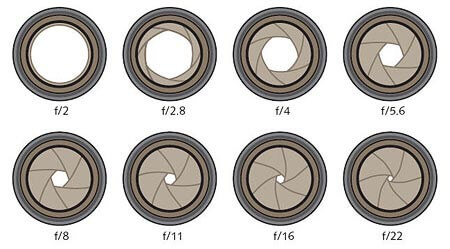
Best Canon Lens For Portraits and Wedding Photography
Now that you know the most important elements to consider when choosing a lens for portraits, I leave you a list with some of them. If I name only Canon it is not because it is the only brands, of course, but because most users have one or the other. If you are from Sony, Pentax …
Best Canon Lens for Portrait Photography | 2024 Products Overview
1. Canon EF 70-200mm f/2.8L IS II USM
- Focal Length: 70-200mm
- Maximum Aperture: 1:2.8
- Lens Construction: 18 elements/15 groups
- Min. Focus Distance: 4.9 ft. (1.5m)
- Optical IS: Yes
- Diameter x Length: 3.3 x 7.6 in.
- Weight: 46 oz
The EF 70-200 mm f / 2.8L IS II USM is an off-road zoom telephoto lens designed for professional use. It has a robust and durable design, a four-step Image Stabilizer and special lenses.
Its versatility (from portraits to sports) and its robustness, it has become a classic. In addition, being 2.8 it holds a 1.4x or a 2x in good light conditions. Price according to its quality.
It has a fluorine coating that helps reduce dirt and water that adheres to the lens. We have checked it in a real environment, surrounded by nature and dust, and it really works, because although it is inevitable that we have to clean the target after a long session, the truth is that we do not find so much dust attached.
It also has a coating, called Super Spectra, which serves to eliminate parasitic lights and the optical veil, in addition to fluorite elements to correct color aberrations. In general, in making contact their behavior has been very correct in this regard, even working with headlights
It incorporates the usual Canon ultrasonic motor, which means high auto-focus speed, as well as being very quiet, as expected. In practice, all kinds of situations are very effective, with somewhat less success when there is little contrast in a scene or light is scarce.
A zoom lens as versatile as a 70-200 mm allows us to work for various purposes, especially for nature, landscapes, wildlife … which is where it unfolds with great ease and where it offers good results. It leaves us the best sensations when used at its maximum opening.
That f / 4 tells us that it is not the brightest TV (for that we have the aforementioned older brother also recently presented) but it allows us to work in scenes where light does not abound and we can take advantage of it with the effective stabilizer , or, take advantage of its maximum opening to get a nice blur . The result is very good, gradual and with a bokeh that will surely delight wedding photographer or portraits.
- High-performance L-series zoom telephoto lens
- A maximum constant aperture of f / 2.8
- Four-step Image Stabilizer
- Target elements of fluorite and UD
- Enhanced durability
- 1.2 m minimum focusing distance
- Water and dust resistant
- USM ring-type auto-focus motor
Also read: Outdoor Photography
2. Canon EF 50mm f/1.2L USM Ultra-Fast Lens
- Focal Length: 70-200mm
- Maximum Aperture: 1:2.8
- Lens Construction: 18 elements/15 groups
- Min. Focus Distance: 4.9 ft. (1.5m)
- Optical IS: Yes
- Diameter x Length: 3.3 x 7.6 in.
- Weight: 46 oz
With the brightest diaphragm of all the range's objectives, the extraordinarily fast EF 50mm f / 1.2L USM offers excellent performance in low light situations, which makes it the ideal choice for graphic reporters who wish to be able to control Shallow depth of field or take indoor pictures without the need for flash.
This Mario is called the King of Objectives, do you want to know why he calls him that? Click on the link and you will know all its "benefits". If your budget does not allow it, you may want to know the one called by the Prince of the objectives.
- It has Circular opening that allows to obtain an excellent '' bokeh '' in the background
- Send the distance information to the camera so it can be used by the E-TTL II flash system
This lens has a large maximum aperture of f / 1.2l, which makes it possible to take pictures without a tripod in low light. These large openings can be used to restrict the depth of field, even with such short focal lengths.
- Exclusive sales arguments
- L series construction and optics
- Large diaphragm f / 1.2
- Fast and silent autofocus
- Super Spectra Coatings
Also read: why do photographers always wear black?
3. Canon EF 24-70mm f/2.8L II USM Zoom Lens
- Focal Length: 24-70 mm
- Maximum Aperture: 1:2.8
- Lens Construction: 18 elements /13 groups
- Min. Focus Distance: : 0.38m/1.25 ft.
- Optical IS: Yes
- Diameter x Length: 3.3 x 7.6 in.
- Weight: 28.4 oz
In response to the ever-increasing demand for digital photo quality, the new EF 24-70mm f / 2.8L II USM format is the latest update to the popular series EF optics series. L: Restoring a new standard for superior optics, durable construction, and high performance with professional zoom.
Standard zoom lenses have large apertures throughout the focal length. Featuring the latest advances in optical lens design, it uses Super UD lens elements and two UD lens objectives that minimize chromatic aberration at the wide-angle periphery and reduce color blur. The edge of the subject.
In addition, two types of spherical lenses are combined to reduce spherical aberration over the entire image area and zoom range. Optimized lens coating also helps to ensure outstanding color balance while minimizing ghosting. The lens is also equipped with a circular nine-blade diaphragm for a beautiful soft bottom.
A high-speed processor with ring-type USM and optimized AF algorithm enables quiet and fast autofocus.
Designed for harsh professional use, it has improved dustproof seals and water resistance while coating to accommodate ever-increasing digital photography. Using fluoride on the front and back lens surfaces can reduce dirt, streaks, and fingerprints.
The zoom lock lever locks the zoom position at the wide end for safe transport when mounted on the shoulder EOS DSLR camera.
- An anti-dust and water coating
- Fixed f/2.8 lens opening
- Whisper-quiet autofocus motor
- Quality of the image is extraordinary
- 13 months of free damage protection
Also read: Why should we shoot in RAW format?
4. Canon EF 100mm f/2.8L Macro IS USM
- Focal Length: 70-100mm
- Maximum Aperture: 1:2.8
- Lens Construction: 15 elements/12 groups
- Min. Focus Distance: 0.99 ft./0.3m
- Optical IS: Yes
- Diameter x Length: 3.3 x 7.6 in.
- Weight: 46 oz
The actual magnification of EF 100mm f / 2.8L EF USM macro is 1: 1. In other words, the subject you are actually shooting is the same size as the camera sensor.
This versatile lens, combined with integrated hybrid image stabilization and lightweight design, delivers stunning results in portrait and film creation thanks to its ability to achieve beautiful blur and shallow depth of field.
It's minimum focusing distance is 90 cm (you can get quite close ?). Compress the facial features and allow the subject to stand out well on the background.
- Quality of construction
- Optical stabilization
- Overall optical quality
- High dive in the center from f / 2.8
- No distortions
- No chromatic aberrations
- Optical stabilization performance
Lack of homogeneity of the sharpness between the center and the edges of the images at the largest openings - Vignetting visible up to f / 4
Also read: Best Ring Lights For Photograph
5. Canon EF 35mm f/1.4L II USM
- Focal Length: 35 mm
- Maximum Aperture: 1.4 L II
- Lens Construction: 14 elements/11 groups
- Min. Focus Distance: 4.9 ft. (1.5m)
- Optical IS: No
- Diameter x Length: 3.2 x 4.2 in.
- Weight: 26.8 oz
A 35mm is a fixed focal length almost unavoidable for a photographer. Focale of excellence for reporting, it can also be quite suitable for landscape, and even portraiture. Canon has, in its fixed focal length range, a 35mm f / 1.4 originally designed for Canon EOS SLR cameras in EF mount, the Canon EF 35mm f / 1.4L II USM. Here is our test of this very bright optics and dedicated to professionals.
This Mario is called the King of Objectives, do you want to know why he calls him that? Click on the link and you will know all its "benefits". If your budget does not allow it, you may want to know the one called by the Prince of the objectives.
This lens has a beautiful optical formula composed of 14 lenses divided into 11 groups. It integrates two aspheric lenses to limit, among other things, geometric aberrations (spherical aberrations and coma). There is also a UD (Ultra Low Dispersion) glass and a BR (Blue Ray) composite glass to limit chromatic aberrations. The flare and the presence of ghost images are limited thanks to the Super Spectra treatment.
It is an ultra-bright lens (maximum aperture f / 1.4 and minimum f / 22) with a circular diaphragm with 9 lamellae and the autofocus motor is provided by the USM motor (Ultra Sonic Motor). The minimum focusing distance is 28 cm which gives it a maximum magnification ratio of 0.21X.
This very long length has the merit of providing some advantages. For starters, the grip is very comfortable: we have plenty of room to grip the lens with all the fingers. It also allows a constant-space design depending on the focus distance. The front lens is always fixed which is a plus for potential use with a polarizing filter. This design is in favor of protection against bad weather and bad shooting conditions (rain, humidity, dust) which is also ensured by the presence of a seal at the mount. No worries about extreme terrain use!
The lens gives the best of itself at f / 5.6 and the overall performance is very slightly behind at the f / 1.4 largest aperture.
- Algorithms optical correction embedded
- Devoid of optical stabilization
- Ultra large opening f / 1.4 with beautiful effects of bokeh
- Quality manufacturing (all-weather protection) irreproachable
- General optical quality, character image: pique, no aberrations
- Relatively high weight
- No optical stabilization
Also read: Best Cameras For Landscape Photography
6. Canon EF 85mm f/1.2L II USM AF
- Focal Length: 78 mm
- Maximum Aperture: 1.2L
- Lens Construction: 8 elements/ 7 groups
- Min. Focus Distance: 3.2 ft
- Optical IS: Yes
- Diameter x Length: 3.3 x 3.3 in.
- Weight: 36.2 oz
The EF 85mm f / 1.2L USM II lens meets the highest Canon standards for precision optics. The L Series is the flagship range of Canon EF professional lenses, combining outstanding optical performance and extraordinary functionality with a dust and moisture-resistant construction.
Large aperture f / 1.2
The maximum aperture at f / 1.2 ensures fast shooting in low light conditions without the need for a flash. This very large aperture also allows very precise control of the depth of field for portrait photography.
Excellent background blur
The circular aperture creates an aesthetic and consistent background blur when isolating subjects with the full aperture.
Fast and Quiet Autofocus Focus
Ultrasonic Annular Motor (USM) uses ultrasonic vibration to drive extremely fast autofocus focusing on the near-silent operation. A fast processor and optimized AF algorithms further accelerate autofocus. On the other hand, this high torque AF motor stops the focusing lens group without inertia or hesitation. Manual and permanent retouching of the point is possible in autofocus.
Super Spectra Treatment Super Spectra
treatment and optimized lens shape eliminate the possibility of internal glare and ghosting, which can occur with digital cameras due to the sensor's potential reflection. This treatment also provides a natural color balance and enhances contrast for vivid and true-to-life images.
Transmitting Distance Information to the E-TTL II System
The lens transmits camera-to-subject distance information to the camera's E-TTL II flash system for optimal flash exposure metering in all shooting situations.
- With a lot of sharpness and a very soft bokeh (blur).
- Fast and silent autofocus focus
- Super Spectra Treatment
- Transmission of camera-to-camera distance information to the housing for the E-TTL II flash system
- Soft case and lens hood provided
- AF slower than usual.
7. Canon EF 16-35mm f/2.8L III USM
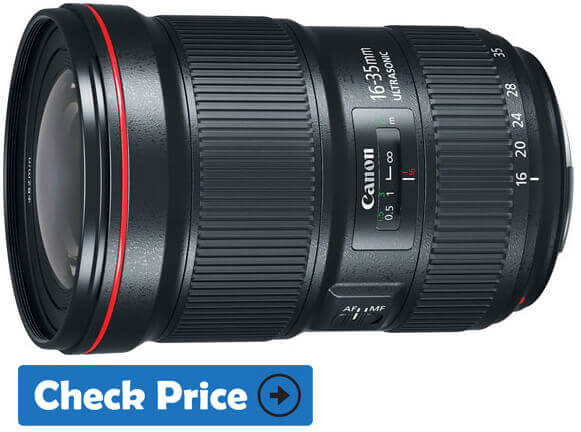 Specification:
Specification:
- Focal Length: 35 mm
- Maximum Aperture: 1:2.8
- Lens Construction: 16 elements/12 groups
- Min. Focus Distance: 4.9 ft. (1.5m)
- Optical IS: Yes
- Diameter x Length: 3.3 x 7.6 in.
- Weight: 27.8 oz
This CANON 16-35mm f / 2.8L III USM Super Wide Angle zoom provides a wider view, faster aperture and close focus.
Developed to succeed the famous 16-35mm f / 2.8L USM II, the Canon 16-35mm f / 2.8L III USM lens is set to become the favorite wide-angle zoom lens for professionals.
The release of the Canon 5D Mark IV and its high resolution of 30 million pixels resulted in the design of this new ultra-wide-angle lens Canon EF 16-35mm f / 2.8L III USM.
Among the novelties to note, a revised optical formula with always 16 lenses now divided into 11 groups and a diaphragm 9 slices, which should ensure a fluid bokeh and accurate.
The constant f / 2.8 aperture guarantees outstanding performance in low light conditions and depth of field control over the entire zoom range. The fast autofocus is controlled by an annular USM (Ultrasonic Motor) engine that is virtually inaudible and features the latest autofocus algorithms developed by Canon. A permanent manual focus is also available. Like all lenses in the L series, it is weather resistant.
What is Canon's L series?
The letter L indicates that this lens belongs to the prestigious series of professional EF lenses: the ultimate in image quality and ease of use with added weather protection and reliability.
The lenses of the L series are designed from special optical materials such as fluorite and ultra-low dispersion glass (UD or super UD).
What is the USM engine?
The USM (ultrasonic) engine is the world's first engine operating on the principle of ultrasonic oscillations used to drive a quasi-silent focusing. It is faster than the human eye.
A USM lens also stops without inertia at the exact moment when the camera detects that the camera is in focus.
What are fluorite and Super UD lenses?
Canon was the first manufacturer to develop the Fluorite lenses and UD glass elements needed to correct chromatic aberration. This aberration results in a different point of convergence for the wavelengths of different colors or in the variation of the refraction of the different rays of light which pass through the lenses of conventional glass. Due to their special diffraction properties, Fluorite lenses and UD glass elements correct these aberrations and ensure optimal sharpness, high contrast, and accurate color reproduction.
- Constant opening f / 2.8
- Quality of manufacture, grip, Setting rings
- zoom ring is remarkable
- Lack of homogeneity of the dive
- Vignette very important
FAQs
Which Camera Is Best For Wedding in 2024?
Choosing the best camera for wedding photography in 2024 depends on your specific needs and preferences, as well as your budget. Here are a few options to consider:
- Sony A7 III: This full-frame mirrorless camera offers excellent image quality, fast autofocus, and good low-light performance, making it a popular choice for wedding photographers. It also has in-body image stabilization, which can help reduce camera shake and produce sharper images.
- Canon EOS R5: Another full-frame mirrorless camera, the Canon EOS R5 offers a 45-megapixel resolution, fast autofocus, and 8K video recording capabilities. It also has in-body image stabilization and dual card slots for added convenience.
- Nikon Z6 II: This full-frame mirrorless camera has fast autofocus, good low-light performance, and a 24-megapixel sensor. It also has dual card slots and good battery life, which can be important for wedding photography.
- Fujifilm X-T4: This APS-C mirrorless camera offers excellent image quality, fast autofocus, and in-body image stabilization. It also has a flip-out screen, which can be useful for shooting at different angles.
When choosing a camera for wedding photography, it's important to consider factors such as image quality, autofocus performance, low-light capabilities, battery life, and ergonomics. You should also consider investing in high-quality lenses, as they can have a significant impact on the overall image quality. Ultimately, the best camera for wedding photography is one that meets your specific needs and helps you capture beautiful, memorable images of the happy couple and their special day.
Which Lens Is Best For Wedding Photography?
Choosing the best lens for wedding photography depends on several factors, such as your shooting style, the lighting conditions, and the venue. Here are a few options to consider:
- 24-70mm f/2.8: This is a popular choice for wedding photographers as it provides a versatile range of focal lengths, from wide-angle for group shots to short telephoto for portraits. The fast f/2.8 maximum aperture also makes it ideal for low-light situations.
- 70-200mm f/2.8: This lens is ideal for capturing candid shots and portraits from a distance. The fast f/2.8 maximum aperture also provides good low-light performance.
- 50mm f/1.4 or f/1.8: The 50mm lens is a classic choice for wedding photography, providing a standard focal length and a wide maximum aperture for beautiful bokeh and low-light capabilities. It's also relatively affordable compared to other lenses.
- 85mm f/1.4 or f/1.8: This lens is a popular choice for portraits, as it provides a flattering focal length and a wide maximum aperture for beautiful bokeh.
When choosing a lens for wedding photography, it's important to consider your shooting style and the specific needs of the event. You should also consider investing in high-quality lenses, as they can have a significant impact on the overall image quality. Additionally, it's a good idea to have multiple lenses on hand so that you can easily switch between them to capture a variety of shots throughout the day.
What Lens Do Most Photographers Use For Portraits?
Many photographers prefer to use prime lenses with wide apertures for portrait photography. Here are a few popular choices:
- 85mm f/1.4 or f/1.8: This is a classic portrait lens that provides a flattering focal length and a wide maximum aperture for beautiful bokeh and low-light capabilities.
- 50mm f/1.4 or f/1.8: This lens provides a standard focal length and a wide maximum aperture, making it ideal for portraits with a natural perspective and good low-light performance.
- 35mm f/1.4 or f/1.8: While not traditionally considered a portrait lens, the 35mm can provide a unique perspective and is a popular choice for environmental portraits, where the subject is placed within their surroundings.
- 105mm f/2.8: This macro lens can also be used for portraits, providing a long focal length and good sharpness, as well as the ability to capture fine details such as skin texture.
Ultimately, the best lens for portrait photography depends on your shooting style and the look you want to achieve. It's a good idea to experiment with different lenses and focal lengths to find the one that works best for your style and subject matter.
What Is The Best Canon Macro Lens For Weddings?
While macro lenses are typically used for close-up photography, they can also be useful for capturing small details during wedding photography, such as rings and flowers. The best Canon macro lens for weddings depends on your specific needs and shooting style, but here are a few options:
- Canon EF 100mm f/2.8L IS USM Macro Lens: This lens is a popular choice among wedding photographers for its excellent image quality, fast autofocus, and image stabilization. It's also versatile enough to be used for portraits and other types of photography.
- Canon EF 50mm f/2.5 Compact Macro Lens: This lens is more affordable than the 100mm macro and offers a wider focal length, making it ideal for capturing larger details such as wedding cakes and centerpieces.
- Canon EF-S 35mm f/2.8 Macro IS STM Lens: This lens is specifically designed for use with Canon APS-C cameras and offers a wide-angle macro focal length. It also features built-in image stabilization and a macro light for even illumination.
Ultimately, the best Canon macro lens for weddings depends on your specific needs and budget. It's a good idea to test out different lenses before making a final decision to ensure that you get the results you're looking for.
How Many Megapixels Do You Need For Wedding Photography?
The number of megapixels you need for wedding photography depends on several factors, including the size of the prints you plan to make and the level of detail you want to capture. In general, a camera with at least 16 megapixels is sufficient for most wedding photography needs.
While higher megapixel counts can provide more detail, they also require larger file sizes, which can slow down your workflow and take up more storage space. Additionally, more megapixels do not necessarily equate to better image quality; other factors such as dynamic range and low-light performance also play a role.
When it comes to wedding photography, it's important to prioritize image quality over megapixel count. Look for a camera with a good sensor and lens combination, as well as strong low-light performance, to ensure that you can capture high-quality images in a variety of lighting conditions.
What Type Of Photography Is In Demand 2024?
The demand for different types of photography can vary depending on various factors such as current trends, events, and needs of businesses and individuals. However, some types of photography that are likely to be in demand in 2024 include:
- Lifestyle photography: With the rise of social media and influencer marketing, lifestyle photography, which captures candid and natural moments of people's lives, is becoming increasingly popular.
- Commercial photography: With the growing number of businesses operating online, the need for high-quality commercial photography, including product photography, corporate headshots, and branding images, is likely to continue to grow.
- Environmental and sustainability photography: As more individuals and companies become conscious of their impact on the environment, there may be an increased demand for photography that showcases sustainable practices and environmental issues.
- Virtual and augmented reality photography: With the growth of virtual and augmented reality, there may be an increased demand for photography that can be used in these formats, such as 360-degree photos and interactive images.
Ultimately, the demand for different types of photography is constantly evolving, and photographers who stay up-to-date with current trends and adapt to changing needs are more likely to be successful.
What Size Lens Is Best For Weddings?
The best lens size for wedding photography depends on various factors such as your shooting style, the type of shots you want to capture, and the venue's size. However, some commonly used lens sizes for wedding photography include:
- 35mm lens: A 35mm lens is a versatile option that can be used for capturing portraits, group shots, and wide-angle scenes. It's also a good choice for shooting in low-light situations.
- 50mm lens: A 50mm lens is a popular choice among wedding photographers for capturing portraits and close-up shots. It offers a natural perspective and can create a shallow depth of field, which is ideal for separating the subject from the background.
- 85mm lens: An 85mm lens is a great choice for capturing portraits, particularly in situations where you need to create some distance between yourself and the subject. It can also create a pleasing bokeh effect, which is ideal for highlighting the subject.
- Zoom lens: A zoom lens, such as a 24-70mm or 70-200mm, can provide greater flexibility and allow you to quickly switch between different focal lengths. It's a good option for capturing a variety of shots during the wedding day, from wide-angle group shots to close-up portraits.
Ultimately, the best lens size for wedding photography depends on your personal preference and shooting style. It's a good idea to test out different lenses and focal lengths to see which ones work best for your needs.
What 3 Lenses Should Every Photographer Have?
There are countless lens options available for photographers, and the three lenses that are essential for every photographer may vary depending on their individual shooting style and needs. However, here are three lenses that are versatile and commonly recommended for photographers:
- 50mm prime lens: A 50mm lens is a versatile lens that can be used for a variety of photography genres, including portrait, street, and documentary photography. It's a great option for capturing images with natural-looking perspectives and shallow depth of field.
- 24-70mm zoom lens: A 24-70mm zoom lens is a popular choice among photographers as it covers a range of focal lengths and can be used for a wide variety of photography genres. It's great for capturing landscapes, environmental portraits, and events.
- 70-200mm telephoto lens: A 70-200mm telephoto lens is an essential tool for photographers who shoot events, sports, or wildlife. It can also be used for portrait photography, allowing photographers to create flattering images with a shallow depth of field.
These lenses can provide a range of focal lengths and allow photographers to capture a wide variety of shots. Of course, there are many other lenses that can be used for specific purposes, but these three lenses offer a solid foundation for any photographer's kit.
How Do I Get Sharp Wedding Photos?
Getting sharp wedding photos requires a combination of factors, including choosing the right camera settings, using the right lens, and having good technique. Here are some tips to help you get sharp wedding photos:
- Use the right camera settings: Use a fast shutter speed to avoid camera shake and motion blur. A good rule of thumb is to use a shutter speed that is at least equal to the focal length of your lens. For example, if you are using a 50mm lens, use a shutter speed of at least 1/50s.
- Use a tripod or stabilizer: Using a tripod or stabilizer can help you keep the camera steady and avoid camera shaking. This can be particularly helpful when shooting in low light or when using longer focal lengths.
- Use a lens with image stabilization: Using a lens with image stabilization can help you capture sharp photos even when shooting handheld.
- Focus carefully: Take the time to carefully focus on your subject, using the appropriate focus mode and focus point. Make sure your focus point is on the subject's eyes, as this is typically the most important part of the photo.
- Pay attention to lighting: Good lighting can help you capture sharp photos. Make sure your subject is well-lit and avoid shooting in harsh, direct sunlight or other challenging lighting conditions.
- Check your camera and lens: Make sure your camera and lens are in good condition and properly calibrated. Regularly clean your lens and check for any issues that may affect image quality.
- Practice good technique: Use good technique when holding the camera and taking photos. Make sure you are holding the camera steady and pressing the shutter button smoothly.
Remember that getting sharp wedding photos also requires practice and experience. Don't be afraid to experiment with different settings and techniques to find what works best for you.
What Is The Sharpest Portrait Lens?
There are several lenses that are known for producing sharp portrait photos, depending on your camera system and personal preferences. Here are some options to consider:
- Sony FE 85mm f/1.4 GM: This lens is known for its sharpness, even wide open at f/1.4. It produces creamy bokeh and is popular among portrait photographers.
- Canon EF 85mm f/1.2L II USM: This lens is another popular choice for portrait photography. It has a fast maximum aperture of f/1.2, which allows for shallow depth of field and creates a pleasing bokeh.
- Nikon AF-S NIKKOR 85mm f/1.4G: This lens is sharp, even wide open at f/1.4. It produces a nice bokeh and is great for low-light photography.
- Fujifilm XF 56mm f/1.2 R: This lens is known for its sharpness and is a great option for Fujifilm X-series cameras. It produces a smooth bokeh and is ideal for portraits.
- Sigma 85mm f/1.4 DG HSM Art: This lens is a sharp and relatively affordable option for portrait photographers. It has a fast maximum aperture of f/1.4 and produces a smooth and creamy bokeh.
Keep in mind that there are many other lenses that can produce sharp portrait photos, and the best lens for you will depend on your individual shooting style and preferences.
Is 35mm Or 50mm Better For Portraits?
Both 35mm and 50mm lenses can be used for portrait photography, but they produce slightly different results.
A 35mm lens is wider than a 50mm lens and captures more of the scene in the frame. This can be useful if you want to include more of the background or environment in your portrait, or if you are shooting in a small space and need to work with a wider field of view. However, the wider angle can also distort facial features if you get too close to your subject, so it's important to be mindful of your distance when using a 35mm lens.
A 50mm lens, on the other hand, is a more traditional portrait lens and is often preferred for its flattering perspective and sharpness. It allows you to capture more intimate, close-up shots without the distortion that can occur with a wider lens. A 50mm lens is also more versatile and can be used for a wide range of other photography genres.
Ultimately, the choice between a 35mm and 50mm lens for portraits will depend on your personal preference and shooting style. Both lenses can produce beautiful results, so it's worth experimenting with both to see which one you prefer.
What Size Lens Is Best For Portraits?
The best lens for portraits depends on a few factors, including the camera you're using, the style of portrait you're shooting, and your personal preference. Generally, prime lenses with wide apertures (low f-stop numbers) are popular for portrait photography because they can produce a shallow depth of field, which blurs the background and puts the focus on the subject's face.
One of the most popular lens sizes for portrait photography is around 85mm to 135mm, which provides a flattering perspective for most people and allows you to capture intimate, close-up shots without getting too close to your subject. However, this may vary depending on the camera you're using and the effect you're going for.
Other popular portrait lenses include:
- 50mm: A classic lens size that provides a natural perspective and is great for capturing environmental portraits or full-body shots.
- 35mm: A wider lens that can be used for environmental portraits or for capturing a larger scene.
- 24-70mm: A versatile zoom lens that can be used for a range of photography styles, including portraits.
Ultimately, the best lens for portraits will depend on your individual shooting style and the look you want to achieve. It's worth experimenting with different lenses to find the one that works best for you.
What Is The Best Aperture For Wedding Photography?
The best aperture for wedding photography can vary depending on the situation and the effect you're trying to achieve. Generally, wedding photographers tend to use wide apertures (low f-stop numbers) to create a shallow depth of field, which helps to blur the background and draw attention to the subject.
A good starting point for wedding photography is around f/2.8 or f/4, which can produce a nice balance between subject sharpness and background blur. This aperture range is also useful for shooting in low light conditions, which can be common at weddings.
However, the aperture you choose will also depend on the specific scene you're shooting. If you want to capture more of the scene in focus, you may need to use a smaller aperture (higher f-stop number), such as f/8 or f/11. On the other hand, if you're shooting in very low light and want to create a very shallow depth of field, you may need to use an even wider aperture, such as f/1.4 or f/1.8.
Ultimately, the best aperture for wedding photography will depend on the individual situation and your personal preference. It's important to experiment with different aperture settings to find the one that works best for each scene.
Can I Shoot A Wedding With An 85mm Lens?
Yes, it's definitely possible to shoot a wedding with an 85mm lens. In fact, an 85mm lens is a popular choice for wedding photographers because it can produce flattering portraits and allow you to capture intimate moments from a comfortable distance.
However, shooting an entire wedding with just one lens can be limiting, especially if you want to capture a variety of shots and perspectives. Depending on the size and style of the wedding, you may also need a wider lens to capture the atmosphere and context of the scene.
Many wedding photographers use a range of lenses throughout the day, including an 85mm for portraits, a wider lens for group shots and environmental portraits, and a telephoto lens for capturing candid moments from a distance. The exact combination of lenses will depend on the photographer's personal style and the specific needs of the wedding.
What Is The Best Shutter Speed For Wedding Photography?
The best shutter speed for wedding photography can vary depending on the situation and the effect you're trying to achieve. Generally, wedding photographers tend to use faster shutter speeds to freeze motion and ensure sharp images.
A good starting point for wedding photography is around 1/125th of a second, which is fast enough to freeze most normal movements and provide sharp images. However, this may need to be adjusted depending on the specific situation. For example, if you're photographing a fast-moving subject like a dancing couple, you may need to use a faster shutter speed such as 1/250th or higher.
On the other hand, if you're using a slow shutter speed for creative effects, such as capturing motion blur or light trails, you may need to use a tripod or other stabilization to ensure sharpness.
Ultimately, the best shutter speed for wedding photography will depend on the individual situation and your personal preference. It's important to experiment with different shutter speeds to find the one that works best for each scene.
Conclusion:
So far the article today, but before I say goodbye I have to tell you that there are many more factors to consider when making a portrait in addition to the objectives. If you really want to master portrait photography, you can't miss the last blog post in which we tell you everything you need to know to get stunning portraits.
If you found it useful, I would appreciate it if you shared it on Facebook, Google + or Twitter. If you think so, someone else may also find it useful ?. Thank you and see you next time!
Top-Rated Canon Lens For Portraits and Wedding Photography
